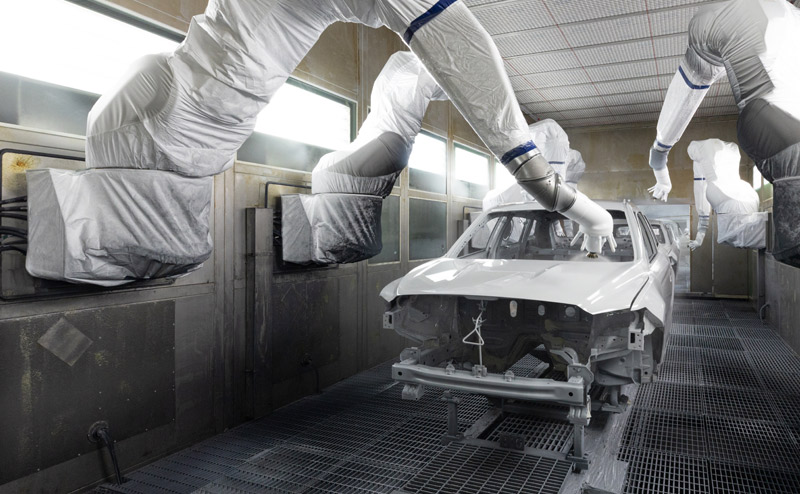What Wi-Fi 7 means for manufacturing
The Wi-Fi 6E successor is here, and it promises to significantly boost the speed and stability of your wireless connections. With rapid speeds, enhanced capacity and lower latency, Wi-Fi 7 is set to improve the way we connect and protect. However, it’s not just our homes where it will have an impact.
Wi-Fi 7, also known as IEEE 802.11be Extremely High Throughput EHT, marks the next phase in the evolution of wireless technology. It ensures faster speeds, improved stability and enhanced security, also involving Wi-Fi Protected Access (WPA4) support.
WPA4 builds upon the foundations laid by its predecessor, WPA3, which implemented vast improvements in encryption and authentication methods. The security certification with Wi-Fi 7 is further bolstering wireless network security, where digital threats are becoming more frequent and sophisticated.
Interestingly, manufacturers have been implementing pre-certified Wi-Fi 7 chipsets in devices since 2022, so let’s explore how manufacturers can benefit from Wi-Fi 7 or at least start the upgrading process — even if they’re a wireless standard or two behind.
Cyber security
A recent report by Guardz, a cybersecurity company which analysed small and medium enterprises (SMEs), revealed that 57% of SMEs have experienced a cybersecurity breach.

The survey also revealed that 31% of respondents stated that their business had been targeted by a breach in the past 12 months alone.
With manufacturers wanting to secure their operations, Wi-Fi 7 integrates a significant security feature — called Multi-Link Operation (MLO). This allows multiple radios inside a device to talk to another device at the same time but across different radio bands.
In an industrial setting, Internet of Things (IoT) devices often have limited processing power and memory, making traditional security measures challenging to implement directly on the devices themselves.
MLO allows for the integration of security controls across various layers of the IoT ecosystem, including network gateways, cloud platforms and edge computing devices.
For example, implementing firewalls, multi-factor authentication and data encryption shields production data from cyber threats.
This approach ensures that security measures are distributed throughout the IoT infrastructure, providing in-depth defence against potential threats.
Scaling up
Plant managers know better than most how essential a reliable internet connection is when it comes to productivity, efficiency and overall business performance. This means that they will want to know exactly where else this new Wi-Fi update will impact their business-critical processes.
The improved rate of data transmission and reduced latency will enhance the capabilities of IoT devices, meaning that warehouses and facilities are still leveraging the data from smart devices.
Improved data transmission allows cloud-based processes to work faster and support greater capacity, making it ideal for businesses looking to scale their operations. Wi-Fi 7’s reduced latency also ensures workers across sites remain connected, coupled with fewer outages.

For example, Wi-Fi 7's high throughput and low latency will be particularly useful for robotics in manufacturing. This comes as the specification supports more connections per access point than previous iterations, making it perfect for factories with thousands of devices.
Pathway to Wi-Fi 7
Therefore, it is no surprise that confidence is growing when investing in wireless technology.
According to WBA Annual Industry Report 2024, more than 41% of respondents plan to deploy Wi-Fi 7 by the end of 2024, with Wi-Fi 7, 6E and 6 at the top of the wireless technologies list.
What’s more, the biggest driver for Wi-Fi 6 and Wi-Fi 6E adoption has been enterprise digitalisation initiatives.
However, for manufacturers looking to advance their cloud computing, security and scalability, the role of a knowledgeable automation parts supplier is crucial.
By offering Wi-Fi 7 compatible hardware, such as routers, access points and IoT devices, manufacturers can upgrade their infrastructure for improved data transmission rates and reduced latency reliably.
Whether you’re Wi-Fi 7 ready or still preparing, Foxmere can help manufacturers source automation parts that can integrate with wireless technology of today and the future.

Daily, we support manufacturers all over the world in retrofitting production lines by adapting legacy equipment to support hardware that meets modern Industry 4.0 standards.
Retrofitting may involve upgrading machinery with modern sensors, automation components or control systems to enhance efficiency and functionality without replacing the entire system.
If you would like to know more or are simply looking to source automation parts that you can rely on, please contact us today.


